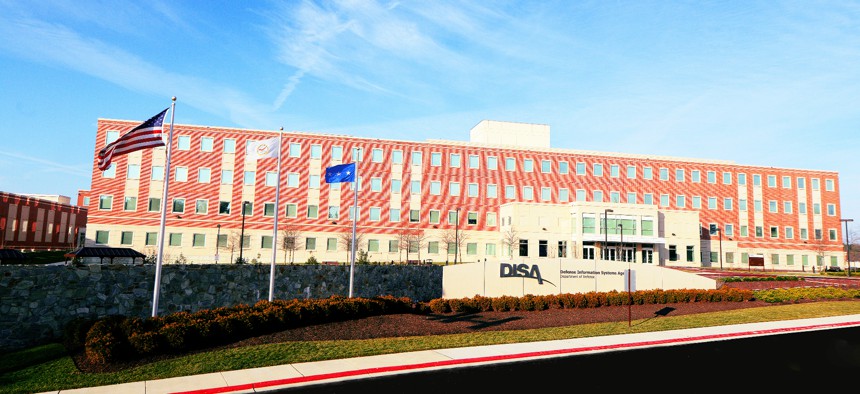DISA leans on training collaboration, academic partnerships to build future workforce

DOD photo by Thomas L. Burton
The Defense Department's IT agency says "collaborative environment" at U.S. Cyber Command's Dreamport has been key for tech workforce development.
The Defense Information Systems Agency wants to foster "collaborative environments" to bolster training and development of the future tech workforce. And key to that has been the agency's relationship with Dreamport facilities run by U.S. Cyber Command.
Jason Martin, the director for digital capabilities and security center at DISA, said during a Jan. 14 industry meeting that the collaboration started as the agency working with the National Security Agency and CYBERCOM to develop reference architectures for zero trust.
"I think it's been incredibly beneficial, certainly to help DISA evolve and move to the next step when it comes to zero trust," Martin said. "And as a result of our work there…truly led us to our Thunderdome initiative."
Martin said Dreamport's setup has benefited the overall DOD workforce particularly because once individuals go through a training program, they can return to their headquarters and share what was learned.
"As we put more of our workforce through there, and to work in these collaborative type environments, it's a fantastic and it's a wonderful learning experience, not just for the folks on the ground there, but then they're bringing it back to headquarters, their bringing it back to our partners," Martin said, adding that collaborative environments to meet future talent needs "would be very beneficial for just a department and the overall workforce."
Llewellyn "Don" Means Jr., DISA's director of the center for operations, said the agency has also been working to bolster its relationships with universities and academic institutions, aligning with universities' priorities to make sure their students are prepared to work on relevant real-world problems.
"Beyond Dreamport, the university engagement has been important," Means said, noting that DISA was invested in developing future talent across multiple disciplines such as cyber, engineering, business and finance.
"We also set up the strategic outreach and talent acquisition directorate here at DISA, again, to continue to hone the message, not just to industry, but to academia, so that when the kids graduate, they're working [on] relevant problems and they are ready to go."
The defense IT agency has ongoing partnerships with Maryland universities, including Towson University and University of Maryland Global Campus, and with public schools near DISA's headquarters in Fort Meade.
Additionally, Dreamport has been instrumental in helping bolster DISA's relationship with industry through other transaction authorities (OTAs), which allow for rapid prototyping and cut through some of the steps required in the traditional acquisition process.
Douglas Packard, who leads DISA's procurement directorate and IT contracting, said Dreamport has been a "conduit and catalyst for other transaction authorities, which have been wildly successful within DISA."
While DISA has partnered with other defense organizations on OTAs, it successfully launched its own with its cloud based internet isolation (CBII) program that was developed to enhance cybersecurity.
Stephen Wallace, DISA's chief technology officer, said during a recent virtual conference that the "OTA process tends to be a lot more collaborative" and led DISA to "do a bake off in real time with different technologies" for CBII.
"We came out in a very different position than if you had asked me at the very start of things where I thought we would have ended up," Wallace said.
"The government's trying to write these requirements, to the best of our knowledge…but at the end of the day, we only know what we know, at the time of issuance. The prototype period gives us a lot of time to learn and get better, gain better knowledge of what we're trying to do."



